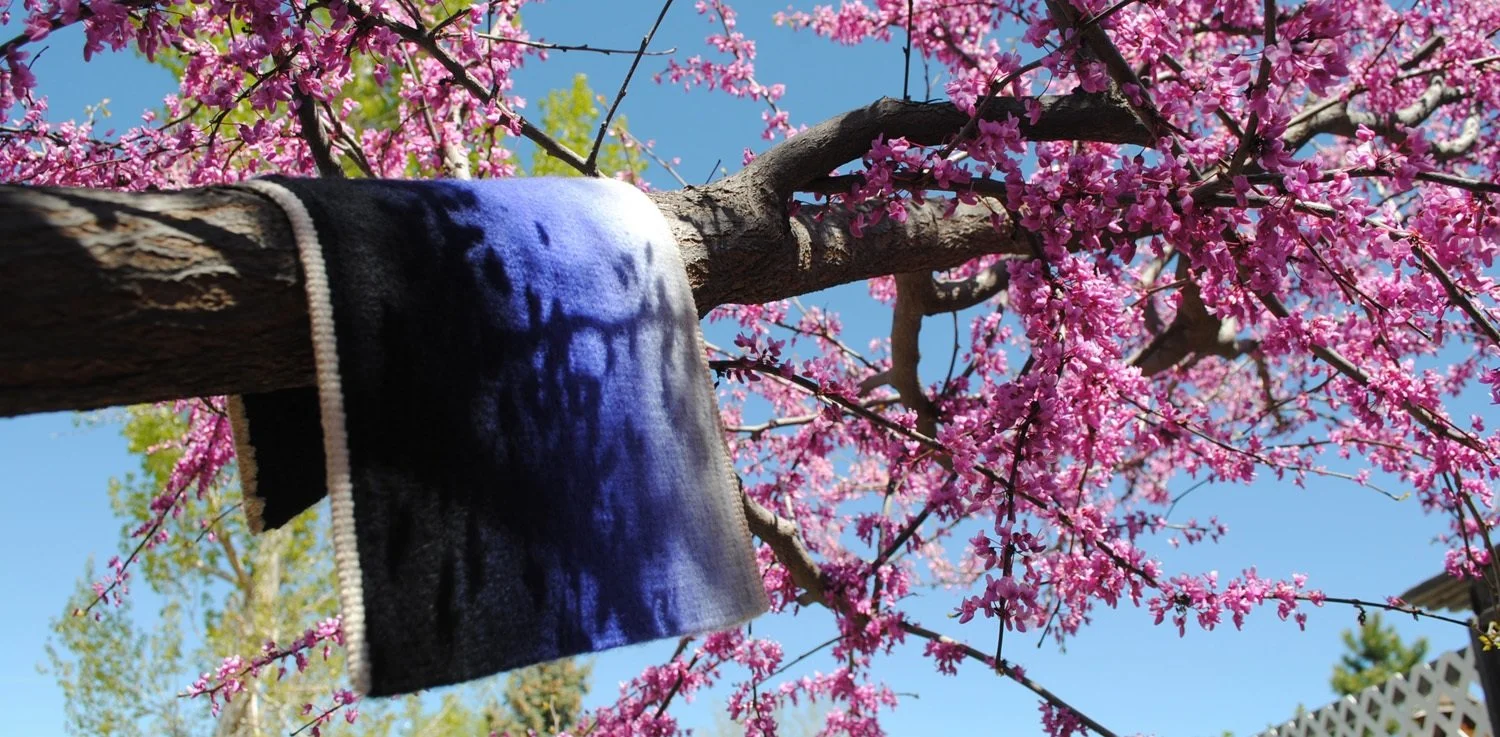![A week teaching in Taos and a return home in the snow]()
The week before last I was back in Taos teaching at Mabel Dodge Luhan House. We had a lovely week of tapestry weaving with a group of alumni, most of whom come back every year.
This retreat focuses on the design questions of the participants. This year I added another component and some of us looked at how to make vertical forms or lines in tapestry. Some of the participants used these ideas in their tapestries or samples for tapestries.
Making vertical forms in tapestry weaving is a challenge because we’re working on a grid and all vertically-oriented shapes have to go against that grid to build upward. That means that tapestry has a very stepped appearance. This is the nature of this art form and in a lot of cases I encourage students to embrace that.
But most of the time we want to make a stable textile and so all the regular factors of technique and materials come into play when weaving vertically oriented forms. During the retreat we talked about using techniques like double weft interlock, various other joins, sewing slits, using slits to suggest vertical lines, and other means of making marks that read as vertical lines.







